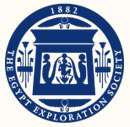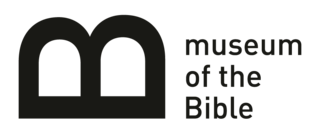
The Bible is a collection of religious texts or scriptures sacred in Christianity, Judaism, Samaritanism, and many other religions. The Bible is an anthology—a compilation of texts of a variety of forms—originally written in Hebrew, Aramaic, and Koine Greek. These texts include instructions, stories, poetry, and prophecies, among other genres. The collection of materials that are accepted as part of the Bible by a particular religious tradition or community is called a biblical canon. Believers in the Bible generally consider it to be a product of divine inspiration, while understanding what that means and interpreting the text in differing, various ways.

The First Epistle of John is the first of the Johannine epistles of the New Testament, and the fourth of the catholic epistles. There is no scholarly consensus as to the authorship of the Johannine works. The author of the First Epistle is termed John the Evangelist, who most scholars believe is not the same as John the Apostle. Most scholars believe the three Johannine epistles have the same author, but there is no consensus if this was also the author of the Gospel of John.

The New International Version (NIV) is an English translation of the Bible first published in 1978 by Biblica. The NIV was created as a modern translation, by Bible scholars using the earliest and highest quality source manuscripts available, into broadly understood modern English.

The Dead Sea Scrolls are ancient Jewish and Hebrew religious manuscripts discovered in 1946/7 at the Qumran Caves in what was then Mandatory Palestine, near Ein Feshkha in the West Bank, on the northern shore of the Dead Sea. Dating from the 3rd century BCE to the 1st century CE, the Dead Sea Scrolls are considered to be a keystone in the history of archaeology with great historical, religious, and linguistic significance because they include the oldest surviving manuscripts of entire books later included in the biblical canons, along with deuterocanonical and extra-biblical manuscripts which preserve evidence of the diversity of religious thought in late Second Temple Judaism. At the same time they cast new light on the emergence of Christianity and of Rabbinic Judaism. Most of the scrolls are held by Israel in the Shrine of the Book at the Israel Museum, but their ownership is disputed by Jordan due to the Qumran Caves' history: following the End of the British Mandate for Palestine in 1947, Jordan occupied the area in the 1948 Arab-Israeli War, and Israel captured both it and several Scrolls claimed by Jordan in the 1967 Six Day War. As a result, some of the scrolls are still in Jordan and are now displayed at The Jordan Museum in Amman. Ownership of the scrolls is also contested by the State of Palestine.

The New Revised Standard Version (NRSV) is an English translation of the Bible published in 1989 by the National Council of Churches. The NRSV was intended as a translation to serve devotional, liturgical and scholarly needs of the broadest possible range of Christian religious adherents. At present, the New Revised Standard Version is the version most commonly preferred by biblical scholars; this is due to its basis on what are often considered the oldest and reliable manuscripts, and its strict adherence to word-for-word translation.

The Egypt Exploration Society (EES) is a British non-profit organization. The society was founded in 1882 by Amelia Edwards and Reginald Stuart Poole in order to examine and excavate in the areas of Egypt and Sudan. The intent was to study and analyze the results of the excavations and publish the information for the scholarly world. The EES have worked at many major Egyptian excavation and sites. Their discoveries include the discovery of a shrine for the goddess Hathor, a statue of a cow from Deir el-Bahri, the mortuary temple of Queen Hatshepsut, and the sculpted model of Nefertiti from Amarna. The Society has made major contributions to the study of the ancient Egyptian world. The Society is based in London and is a registered charity under English law.

Hobby Lobby Stores, Inc., formerly Hobby Lobby Creative Centers, is an American retail company. It owns a chain of arts and crafts stores with a volume of over $5 billion in 2018. The chain has 969 stores in 47 states. A Christian-owned company, Hobby Lobby incorporates American conservative values and Christian media.
Modern pseudepigrapha, or modern apocrypha, refer to pseudepigrapha of recent origin – any book written in the style of the books of the Bible or other religious scriptures, and claiming to be of similar age, but written in a much later (modern) period. They differ from apocrypha, which are books from or shortly after the scriptural period but not accepted into the religion's canon. Exposing modern pseudepigrapha is part of the fields of palaeography and papyrology, amongst others.
David Green is an American businessman and the founder of Hobby Lobby, a chain of arts and crafts stores. He is a major financial supporter of Evangelical organizations in the United States and funded the Museum of the Bible in Washington, D.C.
The Center for the Study of New Testament Manuscripts (CSNTM) is a 501(c)(3) non-profit organization whose mission is to digitally preserve Greek New Testament manuscripts. Toward that end, CSNTM takes digital photographs of manuscripts at institutions, libraries, museums, monasteries, universities, and archives around the world. The images produced are freely accessible on the Center's website—a searchable library of Greek New Testament manuscripts. With more than 50,000 users examining manuscripts in their digital library each year, the Center's digitization work facilitates a partnership between manuscript owners, archivists, and researchers around the world.

Papyrus 39, signed by 𝔓39, is an early copy of the New Testament in Greek. It is a papyrus manuscript of the Gospel of John, it contains only John 8:14-22. The manuscript paleographically had been assigned to the 3rd century. Written by professional scribe, in 25 lines per page, in large, beautiful letters. It has numbered pages.
Jerry A. Pattengale is a faculty member and administrator at Indiana Wesleyan University. He coined and founded the approach of “purpose-guided education” in 1997 while leading the implementation of student success programs at Indiana Wesleyan University. His approach includes calling for a humanities approach to student success, and the need for faculty involvement in the development of strategies.
Larry Weir Hurtado,, was an American New Testament scholar, historian of early Christianity, and Emeritus Professor of New Testament Language, Literature, and Theology at the University of Edinburgh (1996–2011). He was the head of the School of Divinity from 2007 to 2010, and was until August 2011 Director of the Centre for the Study of Christian Origins at the University of Edinburgh.
Dirk D. Obbink is an American papyrologist and classicist. He was Lecturer in Papyrology and Greek Literature in the Faculty of Classics at Oxford University until 6 February 2021, and was the head of the Oxyrhynchus Papyri Project until August 2016. Obbink was also a fellow and tutor in Greek at Christ Church Oxford, from which role he was suspended in October 2019, as a result of allegations that he had stolen some of the Oxyrhynchus papyri and sold them to the Museum of the Bible.

The Museum of the Bible is a museum in Washington D.C., owned by Museum of the Bible, Inc., a non-profit organization established in 2010 by the Green family. The museum documents the narrative, history, and impact of the Bible. It opened on November 17, 2017, and has 1,150 items in its permanent collection and 2,000 items on loan from other institutions and collections.

David Johannes Trobisch is a German scholar whose work has focused on formation of the Christian Bible, ancient New Testament manuscripts and the epistles of Paul.
Iain William Provan is a British Old Testament scholar, now living in Canada. He is Marshall Sheppard Professor of Biblical Studies at Regent College.

The Hobby Lobby smuggling scandal started in 2009 when representatives of the Hobby Lobby chain of craft stores received a large number of clay bullae and tablets originating in the ancient Near East. The artifacts were intended for the Museum of the Bible, funded by the Evangelical Christian Green family, which owns the Oklahoma-based chain. Internal staff had warned superiors that the items had dubious provenance and were potentially looted from Iraq.

Papyrus 137, designated by 𝔓137, is an early fragment of the New Testament in Greek. The fragment is from a codex, written on both sides with text from the first chapter of the Gospel of Mark; verses 7–9 on the recto side and 16–18 on the verso side. The manuscript has been dated paleographically to the later 2nd or earlier 3rd century, and has been published in the Oxyrhynchus papyrus series as P.Oxy. LXXXIII 5345.












